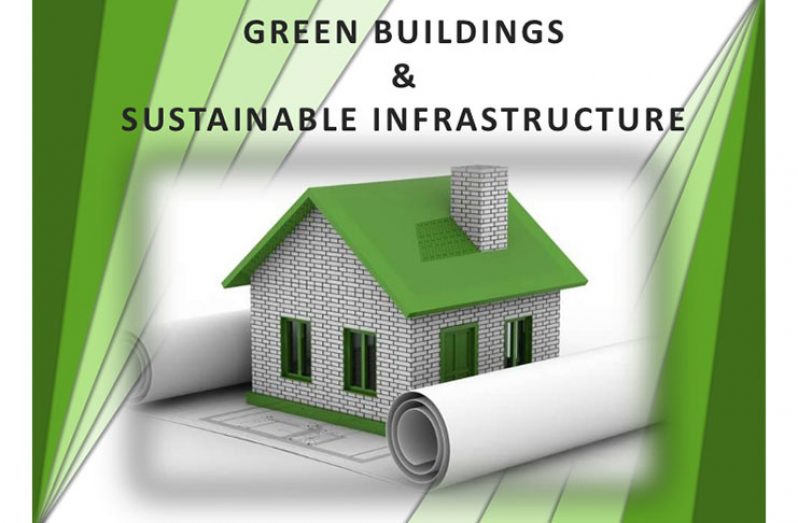LIGHTING is a seemingly inconspicuous and often overlooked element within a building’s infrastructure; yet it is estimated that electric lighting burns up to 25 per cent of the average home’s energy budget and it can actually account for as much as 30-40 per cent of a typical commercial building’s energy costs, according to the Guyana Energy Agency (GEA).
Energy conservation and efficiency practices, once adopted, can assist in lowering electricity costs, and as such, the GEA has noted that an analysis of sectoral energy consumption revealed that the power sector accounted for the second largest share of energy imports – an estimated 33 per cent of the petroleum imports.
This sector comprises electricity generation, mainly from the country’s national utility, and a number of other small generation facilities (including self-generation) across the country.
What then is energy conservation and efficiency?
Public Communications Officer of the GEA, Taiwo Williams, explained that energy conservation refers to the saving of energy by any means, including energy efficiency, which is the efficient conversion and use of energy.
She said energy efficiency employs devices and practices which result in less energy being used for the same task and function. Hence, using energy-efficient lights provide an opportunity for significant cost savings through reduced electricity bills.
Tremendous evolvement of lighting technology over the past two decades has resulted in the availability of a host of exciting, high-performing and highly-efficient new lighting products.
The GEA underscored that Compact Fluorescent Lamps (CFLs) and Light Emitting Diode (LED) lamps are available in a variety of sizes, shapes and colours, thereby allowing for choice of lighting to be both attractive and efficient. Replacing incandescent lamps with CFLs or LED lamps provide an opportunity to save money and cut down on electricity costs.
To understand LED light benefits, it’s important to understand the difference between the two bulbs. LED light bulbs produce light when an electrical current passes through them.
In CFL bulbs, an electric current flows between electrodes at each end of a gas-filled tube. The reaction creates ultraviolet light and heat, which is then changed into light when it hits a phosphor coating on the bulb’s interior. This process takes anywhere from 30 seconds to three minutes to complete.
However, to truly maximise its efficiency, it is important to choose the correct type of CFLs for lighting needs, thus, the energy agency advises that when deciding on lighting fixtures, consideration should be given to the area that is to be lit.
For example, a lower wattage could be used to light a passageway, while one of a higher wattage could be used in the living room and areas where more lighting is required.
Further, a lot of energy could be saved by concentrating lights just where they are needed and reducing background or ambient light levels. This strategy, called task lighting, is widely used in office buildings, but it makes just as much sense to employ it in homes as well.
Making use of natural light is also another way to conserve energy. In terms of energy use, the GEA emphasised that nothing is more efficient than transforming a dark space by filling it with soft, evenly-dispersed natural light.
A single skylight or properly positioned window can provide as much light as dozens of light bulbs during the daylight hours. Simply rearranging furniture in a room can optimise the benefits of natural light, for example, putting a favourite reading chair closer to a window. Painting walls in a light colour and using reflective louvres or Venetian blinds can help to improve overall lighting.
To further conserve energy, users must understand their own preferences and those of their family members before investing in unnecessary lighting solutions. Install task lights where needed and reduce ambient light elsewhere.
If work is concentrated in one corner of the room, for instance at a desk, consider dimming the lights throughout the room and using specific task lights while at your desk. Make sure that you match the amount and quality of light to the task at hand.
The agency also noted that when performing tasks that require a high degree of visual attention, ensure that there is adequate lighting to prevent eyestrain.
“Maximise the use of natural lighting. Sunny days may help improve your mood, and they reduce your electric bill when you open the curtains and let the sun shine in….Consider painting your walls a lighter colour. This helps to minimise the need for artificial lighting. Use occupancy sensors for automatically turning on and off your lights as needed. Security and utility lighting do not need to be bright to be effective. As a security measure, use motion sensor lights in areas where you have walkways or where you wish to have greater security,” Williams said.
Williams also explained that users can make sure outdoor light fixtures have reflectors, deflectors, or covers to make more efficient use of the light source.
“Use photo sensors or timers to automatically turn off lights during daylight hours and motion sensors to activate security or utility lighting where needed. Invest in light sockets that carry switches, so that appliances and lights plugged into the outlets can be turned off with the flip of a switch. By making the extra effort to maximise your lighting efficiency you will not only save money by lowering your electricity bill, but help to reduce Greenhouse Gas Emissions that cause Global Climate Change,” she said.




.png)









